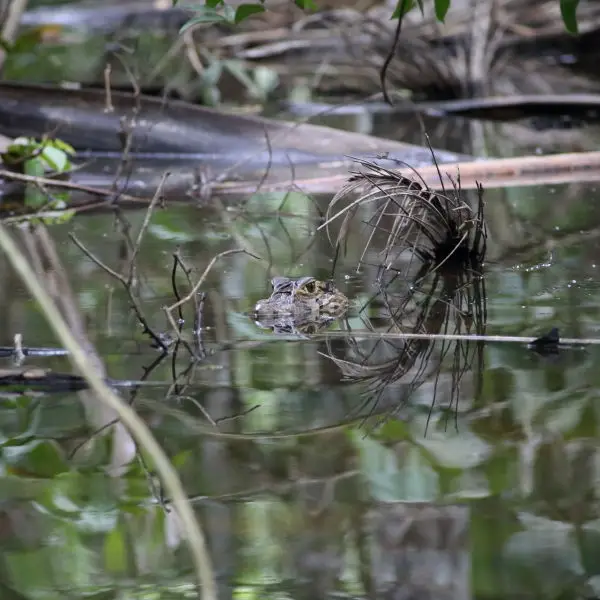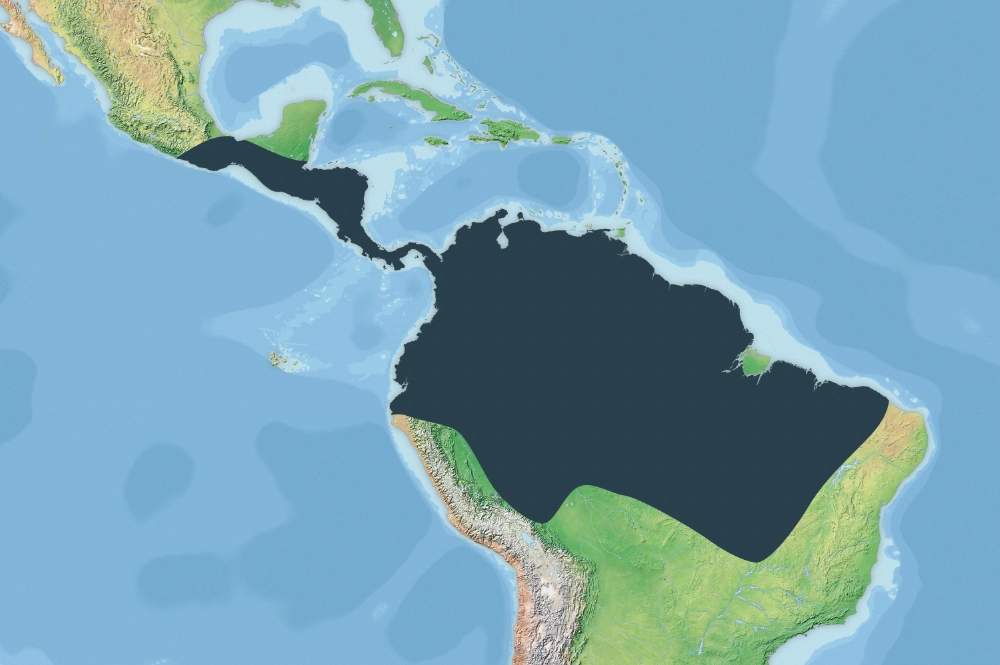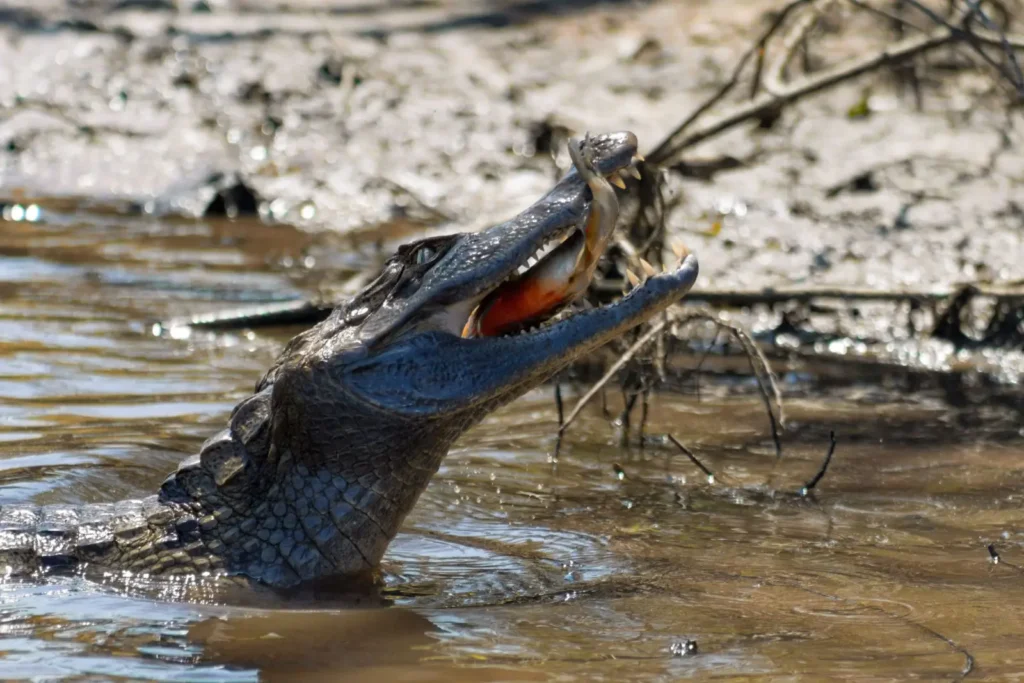Crocodile Caiman (Caiman crocodilus)- one of the the most common types of caimans, found in the waters of Central and South America. This a hardy and well-adapted reptile got its name from external similarity to crocodiles, in particular because of the long pointed muzzle and coloration.
Thanks to wide range, effective hunting strategies and unique adaptations, the crocodile caiman is key predator of aquatic ecosystemsaffecting populations of fish, amphibians, and even small mammals.
Next, consider the biology, behavior, habitat, threats, and current status of this unique species.

Scientific classification
🔬 Taxonomy of the crocodile caiman:
✔ The Kingdom: Animals (Animalia)
✔ Type: Chordal (Chordata)
✔ Class: Reptiles (Reptilia)
✔ Row: Crocodile-like (Crocodylia)
✔ Family: To the alligator (Alligatoridae)
✔ Gender: The Caimans (Caiman)
✔ View: Crocodile Caiman (Caiman crocodilus)
📌 Interesting!
Title crocodilus was given via similarity to real crocodiles (Crocodylidae), although this species belongs to the family alligators.
Origin and history of the discovery
🕵 When and by whom was the crocodile caiman described?
* First described in 1758 by the Swedish naturalist Carl Linnaeus.
* It is believed that the ancestors of the Caimans existed in ancient times. the Mesozoic era along with the dinosaurs.
📌 Interesting!
Fossils of relatives of the crocodile caiman have been found in South America and date from approximately 60 million years!
Appearance and features
💠 What does a crocodile caiman look like?
• Length: On average 1.5-2.5 mbut large males can grow up to 3 m.
• Weight: From 20 to 60 kg, although individuals can reach up to 80 kg.
• Color scheme: From olive green to dark brown, with black spots on the tail.
• Muzzle: Long and pointedwhich makes it look like crocodiles.
• Oko: Large, with vertical pupils, which allows you to see well in the dark.
• Jaws: 72-82 sharp teeth adapted to catching slippery prey.
📌 How is it different from other Caimans?
✅ The snout is longer and narrower than that of the broad caiman.
✅ Greenish coloration and characteristic black spots
✅ Faster and more maneuverable in the water than other Caimans
Range and habitat

🌍 Where does the crocodile caiman live?
It is common in Central and South America, in particular in:
✅ Mexico
✅ Of Colombia
✅ Venezuela
✅ Brazil
✅ Peru
✅ Ecuador
✅ Bolivia
✅ Paraguay
🔹 What places of residence does he choose?
✅ Rivers and lakes
✅ Swamps and mangroves
✅ Flooded plains
📌 Interesting!
Crocodile caiman can survive in polluted water bodieswhich helps it adapt to anthropogenic changes.

Lifestyle and behavior
🔹 Hunting and nutrition
• What does the crocodile caiman eat?
✅ Fish
Amphibians (frogs, salamanders)
✅ Birds
✅ Small mammals
✅ Crustaceans
📌 Interesting!
Young caimans hunt mainly insects and small invertebrates, while adults hunt larger prey.
Reproduction and development
💡 How does the crocodile caiman reproduce?
* Females build nests made of plant material.
* Procrastinate 20-40 eggsthat are being incubated 70-90 days.
* The incubation temperature determines the sex of the cubs:
✅ Higher temperature – males
✅ Lower temperature – females
📌 Interesting!
Females actively protect their nests from predators (raccoons, jaguars, large snakes).

Threats to the species and their protected status
⚠ What threatens the crocodile caiman?
• Hunting for leather
• Deforestation and swamp drainage
• Competition with alien species (such as the Nile crocodile in Florida)
🛡 Security status:
✅ Included in the IUCN Red List with the status of "Least risk" (LC).
✅ Protected by laws in most countries of its range.
📌 Interesting!
Crocodile Caiman-the only species of Caimans, the number of which remains stable thanks to its adaptability to environmental changes.
Conclusion
Crocodile Caiman – a true master of survivalwhich has perfectly adapted to different living conditions.
💡 Basic facts:
✔ Fast and maneuverable predator
✔ It hunts fish, amphibians and small mammals
✔ It lives in the waters of Central and South America
✔ Population remains stable despite threats
📢 The Caiman crocodile is not just a reptile, but a true predator that skillfully combines strength, speed and cunning in the wild!